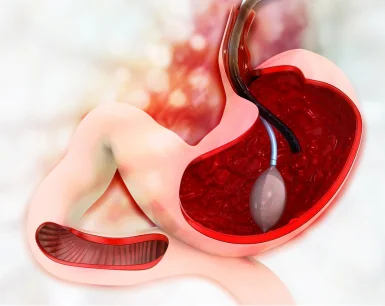There is some data that points to the duodenal switch procedure as being the one most likely to ensure and maintain long-term weight loss. It does this by working on two fronts
1) The restrictive component involves reducing the size of the stomach. The duodenal switch leaves a larger portion of the stomach intact than do other weight-loss surgeries, however, including the pyloric valve, which regulates the release of stomach contents into the small intestine.
2) The malabsorbtive component of duodenal switch surgery involves rearranging the small intestine to separate the flow of food from the flow of bile and pancreatic juices. The food and digestive juices interact only in the last 18 to 24 inches of the intestine, allowing for malabsorption.
Compared with other types of weight loss surgery, the duodenal switch has a number of advantages:
- The remaining stomach is much larger after duodenal switch surgery than following gastric bypass; this allows for larger meals.
- There’s a reduced risk of developing ulcers after duodenal switch surgery.
- The intestinal bypass part of the surgery (number two, above) is partially reversible for those having malabsorptive complications following duodenal switch surgery.
- There are reports of possible greater long-term weight loss and less chance of regaining weight with duodenal switch surgery than with other weight-loss surgeries.
- You’ll see rapid weight loss after duodenal switch surgery (more rapid than that offered by gastric banding procedures).
- There is more complete disappearance of obesity-related illnesses with duodenal switch surgery.
So schedule some time with your surgeon to discuss your various weight-loss surgery options, and consider the duodenal switch as a possibility!




